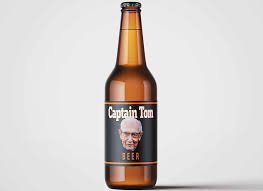This from a month or two back.. not sure how we missed it

Captain Tom Moore – a positive pandemic trade mark story
We have previously covered how the COVID19 pandemic led to a flurry of trade mark applications being filed for COVID19 and CORONAVIRUS trade marks (COVID KIDS for clothing being one strange example). Whilst many of these appear to be questionable and remain pending, the recent trade mark applications for various “Tom Moore” marks have been a welcome reminder of the positive stories that emerged from lockdown.
Captain Tom Moore needs no introduction, having vowed to walk 100 lengths of his garden during lockdown for his 100th birthday in order to raise money for the NHS. He completed this feat and, to date, he has raised over £32 million. Captain Tom has been awarded a knighthood for his fundraising efforts; his official title will be Captain Sir Thomas Moore under Ministry of Defence protocol.
Club Nook Limited, a company run by Captain Tom’s daughter and son-in-law, has filed three UK trade mark applications for CAPTAIN TOM, SIR TOM MOORE and CAPTAIN SIR TOM for a range of goods and services related to his charitable endeavors.
It is certainly a wise move to protect his name. Whilst Captain Tom is well known for his Herculean fundraising effort, it is not unknown for spurious trade mark applications to be filed covering names in the public eye. It is much easier, and more cost effective, to make an application in the first instance than attempt to cancel a third party registration or stop their use when they have a trade mark registration in their arsenal and you have an unregistered right that can be time consuming and costly to prove.
For charities, as for many businesses, their brand is their most important asset and main source of income. A charity’s brand encapsulates the identity of that charitable cause and should be protected with a trade mark registration as a cost effective way of obtaining protection against others using the same brand. Charities have not been immune to third parties imitating them, or selecting a closely similar mark, and unfortunately there will always be unscrupulous parties looking to profit from the efforts of a third party, including diverting funds destined for a charity.
A registration also allows a charity to license their brand to third parties and more easily control how it is marketed, to ensure the use remains within the core values of the charitable endeavour. A well considered filing strategy should provide good protection for the budget available and provide valuable protection against third parties and act as a vital tool for governing authorised use.




